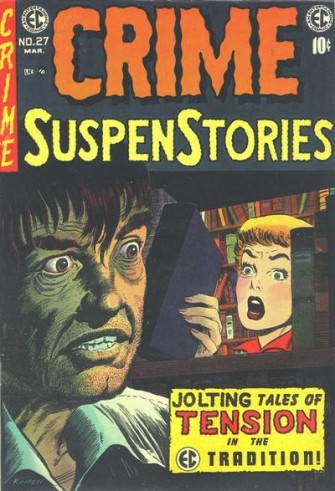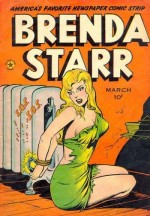
August 7, 2008
 Jack Kamen, 1920-2008
Jack Kamen, 1920-2008

 Jack Kamen
Jack Kamen, one of the foundational artists in the great
EC stable in the 1950s, a formidable drawing talent with an eye for beautiful women, and an illustrator that found work in both Golden Age comics books and commercial art,
died on August 5 of causes related to cancer. He was 88 years old.
Kamen was born in Brooklyn, New York and studied with various working painters and sculptors, in the
Art Students League and at the
Grand Central School of Art. He paid for his schooling through of variety of arts-related job, including decorating mannequins. He found his first art assignments in the pulp magazine industry, and was establishing himself in that field when he entered the Army in 1942.

After the War, Kamen began drawing comics for a variety of late Golden Age publishers, including
Avon,
Fox,
Harvey,
Fiction House and
Superior.
Kamen moved to EC Comics in 1950 through a combination of personal connections and a growing reputation for good girl art, and soon settled into an exclusive arrangement with the publisher. He would go on to draw a wide variety of stories in EC's array of genre offerings. Kamen was a particularly talented and admirably understated cover artist, mastering both the kind of all-American girls that drew the attention of young readers and putting them into the sorts of implied, dangerous situations that compelled those readers to make a purchase. Scripts that flattered Kamen's ability to draw female characters were created and sent his way; they frequently featured women in domestic battles or going off the deep end. Kame would quickly become one of the company's most valuable commercial assets.
The artist described his working situation at EC
in a 2002 interview with Ken Smith. "Al [Feldstein] lived one station stop on Long Island railroad from me. For many years, what he would do is bring the script home and we would discuss it. I never even saw Bill [Gaines]. I would pencil it and and give him the pencils. He would take it back into the city and get them lettered. And he'd have another script for me to do. That was it. It was always a rotation. I'd be going to Al's house and reading the script or getting my work back to ink. Only on very special occasions would I have to go into the office. That's where I caught out everybody else. Because to go in, you lose a day. I never lost a day. I was getting the top rate that they were paying in the field and the editor was a good pal of mine. You can't have anything better than that!"

According to his own testimony and those of EC historians, Kamen was an instigator of the company's post-Code short-lived "picto-fiction" efforts. The picto-fiction comics were more magazine-styled publications by which EC planned to sidestep new content restrictions becoming crystallized into the
Comics Code Authority. Kamen contributed some of his most memorable work to the
Psychoanalysis title. That work was initially targeted for comic strip syndication, and was submitted to King Features and United Features among others before settling back into comic book form at EC.
At about the same time as EC's massive across-the-line reduction following the failure of those latter-period comics, Kamen solidified a long-simmering move into advertising. His client list would grow to include
Vicks Cough Drops,
Carvel Ice Cream,
Playtex,
Pan American and
RCA. The amount of money he was paid for a variety of tasks from thumbnails to full comics inserts effectively priced him out of continuing to work for
Mad. Kamen would eventually do paintings for several clients such as
Mack Trucks and
Smith-Corona; some of those assignments he landed with an agent and others he landed without.
In the 1970s and early 1980s, Kamen was a beneficiary of the rediscovery of the EC comics and their being brought back into the spotlight of pop culture. He contributed art to the comics within the Stephen King movie
Creepshow and the cover to Berni Wrightson's comic book adaptation. In his last decade, Kamen began to speak about his early comics experience, attention he received with a combination of enthusiasm and, it seems, being genuinely flattered by the interest. In addition to the talk with Smith, he interviewed with the comics historian Mark Evanier at the 2000
Comic-Con International, where the convention gave him an Inkpot Award. Perhaps because of his long career in commercial illustration, Kamen was surprisingly candid about his time in comics and contributions to the form, noting for instance that his illustrative impulses sometimes worked against the flow of the stories on which he worked. To Smith in 2002:
"Now my rendering... this is why I admitted it that [Johnny] Craig said that Jack Kamen was an unfavorite artist of the others because they found him wooden. Actually, that's a legitimate criticism and I wouldn't fight it because this was my recipe for speed. Admittedly, maybe attitude was bad, but I didn't consider that kind of thing important. I didn't consider comics important. Back of my mind always was the artist and the illustrator. Some panels that were unique and very good I was considering illustration and art. But in running along the regular script idea of what the story was, I always took the easy way out."
In more recent years, the illustrator taught art in the tradition in which he considered himself a part and was a noteworthy presence in profiles of his son,
Dean, the inventor of the Segway and dozens of related medical patents. In fact, the pair worked together on many of the younger Kamen's early projects, the father doing presentational illustrations for the son. Another son, Bart, is a distinguished oncologist, and I believe from indications of her help with a past project or two Kamen may also be survived by a daughter. A one-time member of Long Island's thriving illustration and cartooning community, Kamen became a resident of New Hampshire in 1982. On the eve of his 80th birthday, he described painting an eight-foot mural for a book project. He told Ken Smith, "You're looking at a very happy man."
*****

*****
*****
posted 8:15 am PST |
Permalink
Daily Blog Archives
November 2019
October 2019
September 2019
August 2019
July 2019
Full Archives


